Smoking and Tobacco
The Smoking Baby of Trenton
Winfield Doran gained famed as the "smoking baby of Trenton." He started smoking a pipe when he was seven months old. Because his parents were worried about the health effects of this, they eventually persuaded him to smoke cigars instead. But he refused to smoke cigarettes.He died of diptheria when he was four years old.


Canton Independent Sentinel - Aug 14, 1890

Quincy Daily Ledger - Nov 11, 1890
Posted By: Alex - Thu Jul 11, 2024 -
Comments (0)
Category: Babies and Toddlers, Children, Smoking and Tobacco, Nineteenth Century
Follies of the Madmen #592
Posted By: Paul - Mon Apr 15, 2024 -
Comments (0)
Category: Television, Advertising, Smoking and Tobacco, 1950s
Tobacco Queen

Posted By: Paul - Sun Apr 14, 2024 -
Comments (2)
Category: Awards, Prizes, Competitions and Contests, Beauty, Ugliness and Other Aesthetic Issues, Smoking and Tobacco, 1940s
Miss Gary Cigaret
In 1944, a newspaper in Gary, Indiana held a beauty contest to select a "Miss Gary Cigaret." The public were encouraged to vote, with each vote costing five cents. All the funds raised would be used to send cigarettes to American soldiers.Over $15,000 was eventually raised, which was able to buy six million cigarettes (or 300,000 packs).
The contest winner, Irene Kuchta, got to model a bathing suit made of cigarettes.
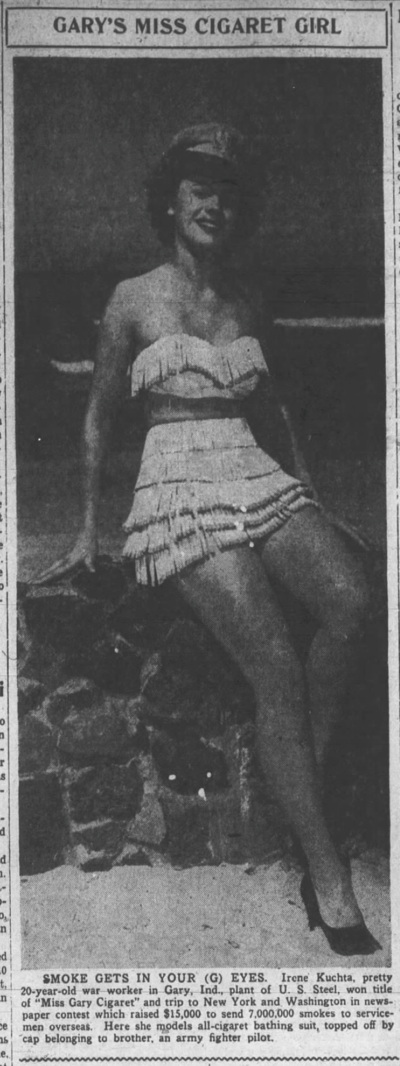
Vidette-Messenger of Porter County - Sep 22, 1944
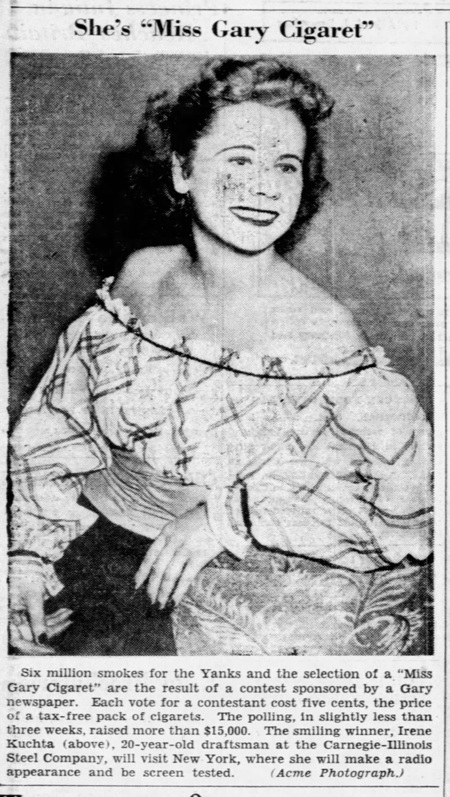
Windsor Star - Sep 9, 1944
Posted By: Alex - Fri Apr 05, 2024 -
Comments (1)
Category: Awards, Prizes, Competitions and Contests, Fashion, Smoking and Tobacco, 1940s
Ornamental Ash Tray
The entire patent, figure and text, is given below. How I wish the inventor had gone on at length about his design.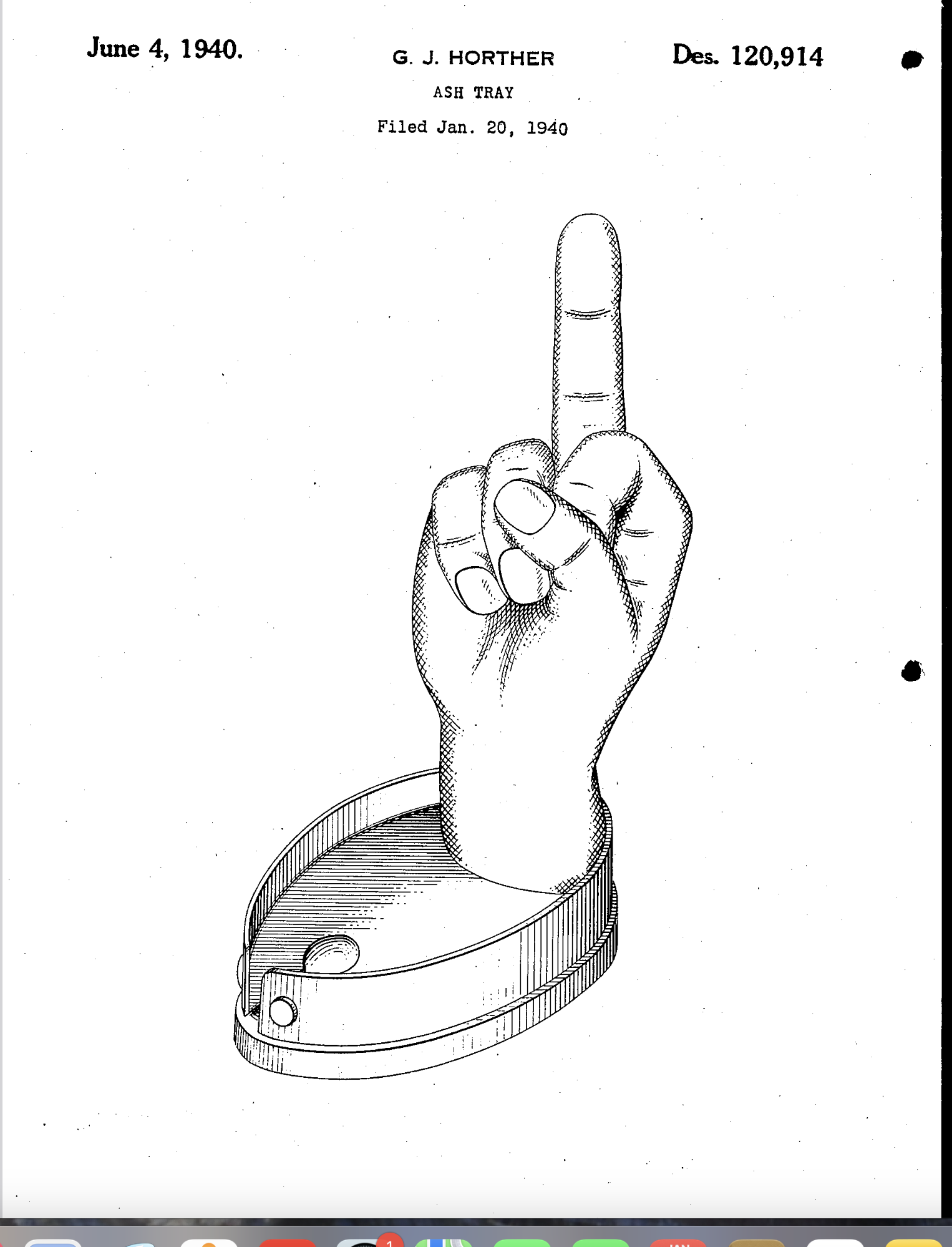
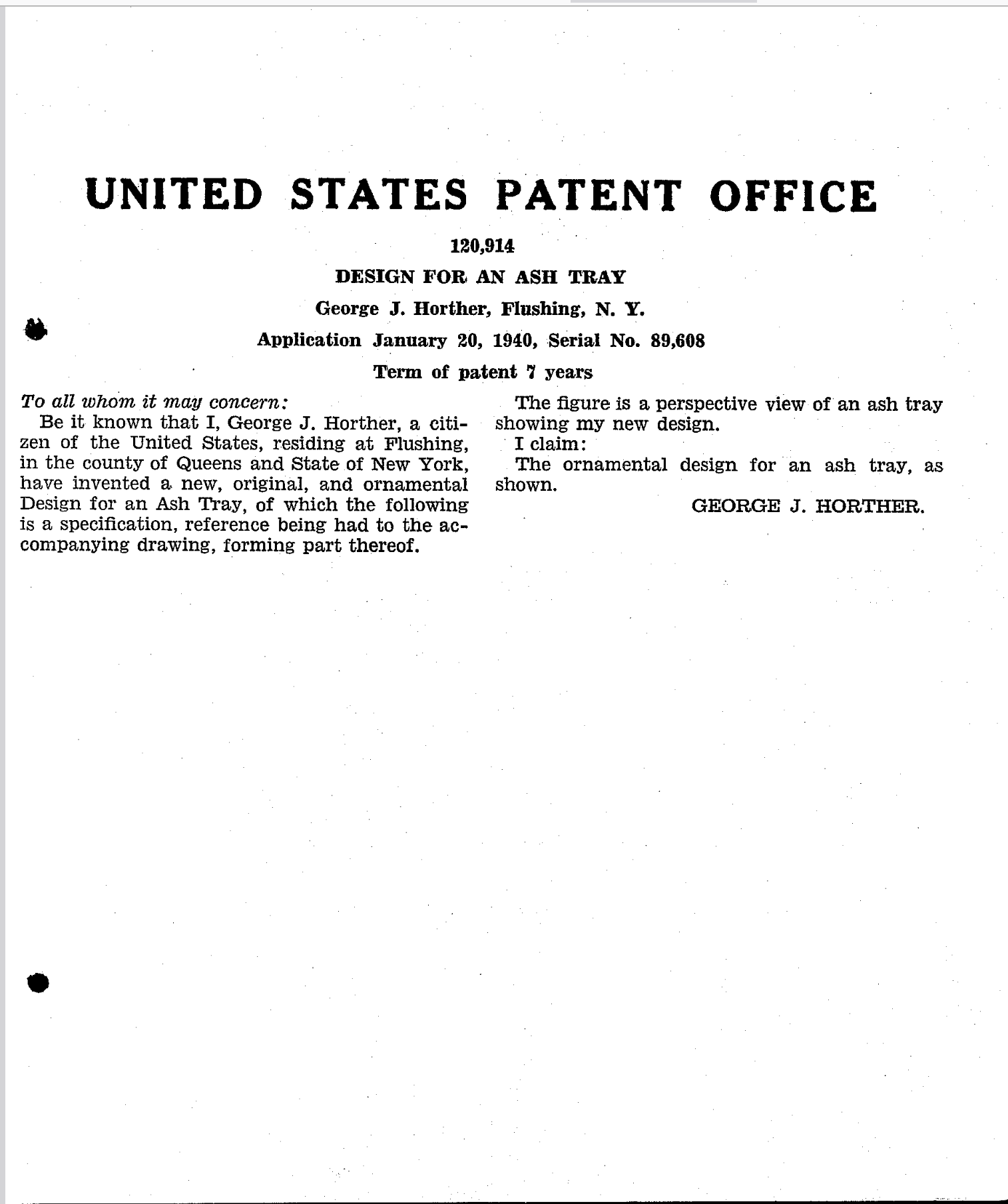
Posted By: Paul - Fri Apr 05, 2024 -
Comments (0)
Category: Obscenity, Patents, Smoking and Tobacco, 1940s
Is it marijuana or alfalfa?
Peter Hlookoff had an unusual strategy to avoid being convicted for possession of marijuana — he always carried a container of alfalfa with him.His reasoning was that alfalfa and marijuana smell similar (so he claimed). So if the police ever arrested him for possession of marijuana he could claim that it was actually alfalfa they had smelled (or seen him smoking).
This strategy was put to the test in Dec 1967 when the police raided his apartment and arrested him for smoking pot. During the subsequent court case his defense led to the magistrate arranging for a court employee to smoke marijuana so that its smell could be compared to alfalfa.
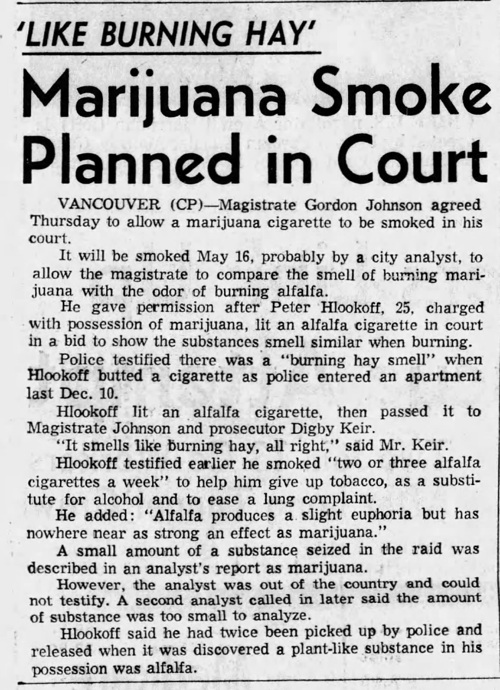
Victoria Times Colonist - May 10, 1968
Unfortunately the courtroom experiment was cancelled before it took place, and the magistrate ended up finding Hlookoff guilty. He didn't buy Hlookoff's follow-up argument that if, perhaps, it had been marijuana he was smoking then someone must have (without his knowledge) put marijuana in his alfalfa container.
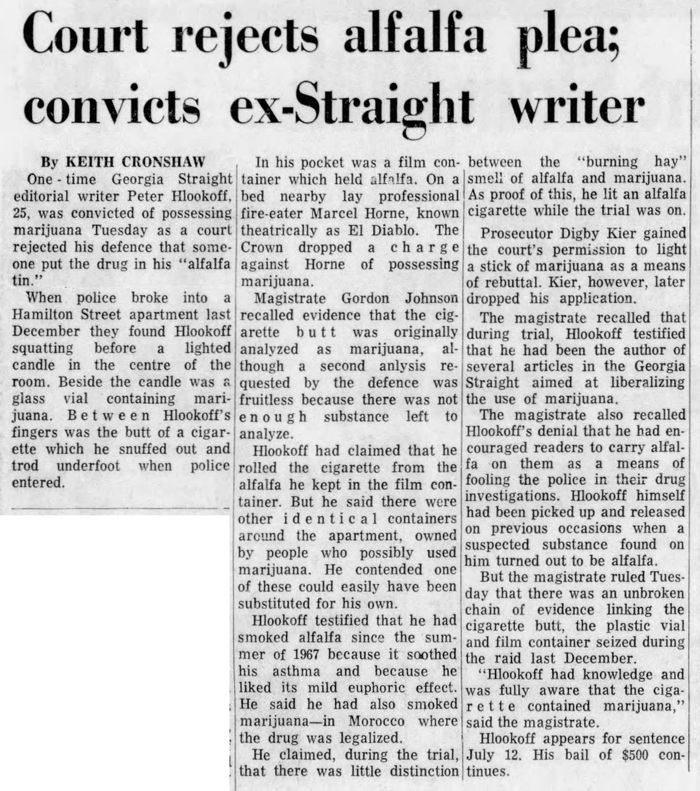
The Vancouver Province - July 3, 1968
Hlookoff's roommate, Marcel Horne (a professional firebreather whose stage name was 'El Diablo'), later wrote an autobiography in which he revealed that, yeah, they were absolutely smoking pot when the police raided their apartment:
We were rapping away very stoned, when we heard someone coming up the stairs. The next thing we knew two cops in uniform walked into the room. Peter tried to drop the roach but the cop saw him. I was too stoned to think properly so I just lay there watching the nightmare. The cops put us up against the wall and frisked us. "Who does the marijuana belong to?" We both answered, "What marijuana?"
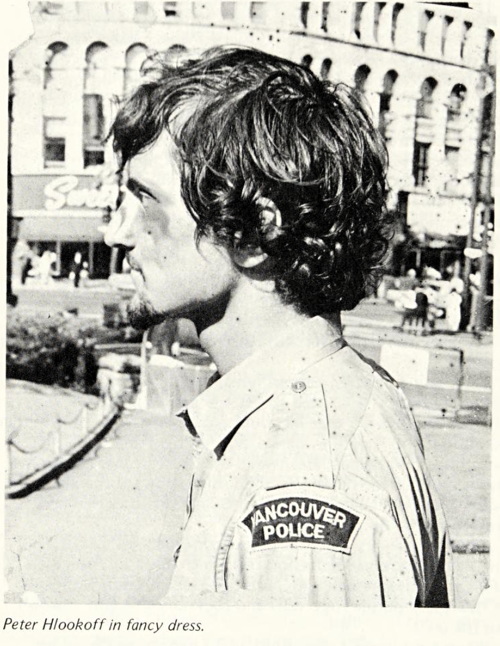
image source: Annals of the Firebreather (1973), by Marcel Horne
Posted By: Alex - Wed Mar 27, 2024 -
Comments (2)
Category: Drugs, Smoking and Tobacco, Law, 1960s
Smoking Facts
Seemed odd to me that the ad would not only mention that they've got "a patent on flavor," but also give the patent number (3828800). So I had to look it up. Turned out to be a fairly boring patent for "an improved cigarette filter material... formed from the porous, granular salt of a weakly basic anion exchange resin."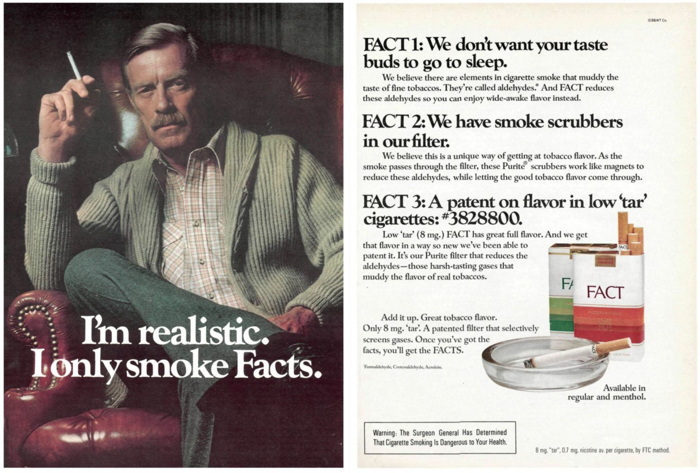
Sports Illustrated - Nov 14, 1977
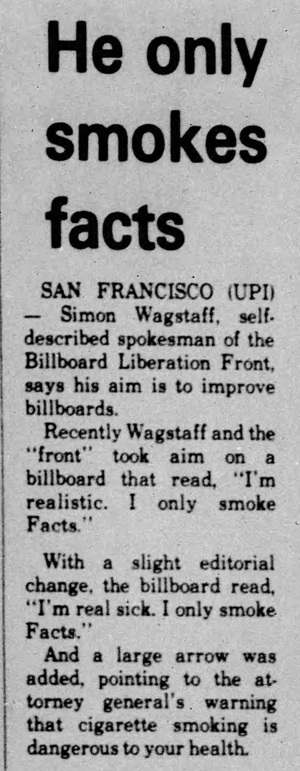
Coos Bay World - Nov 4, 1978
Posted By: Alex - Wed Mar 13, 2024 -
Comments (0)
Category: Advertising, Patents, Smoking and Tobacco, 1970s, Billboards
Saddle Cigarette Lighter
Perhaps it prevented fires caused by burning matches, but what about the fires caused by cigarette butts?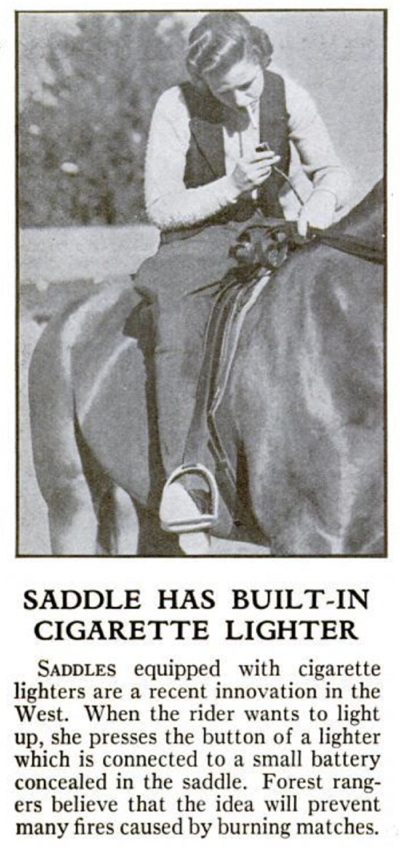
Popular Science - Apr 1936
Posted By: Alex - Wed Jan 24, 2024 -
Comments (0)
Category: Inventions, Firefighting, Arson, Wildfires, Infernos and Other Conflagrations, Smoking and Tobacco, 1930s
Baby the Smoking Blue Jay
We posted a few days ago about a smoking poodle. Now here's a smoking blue jay.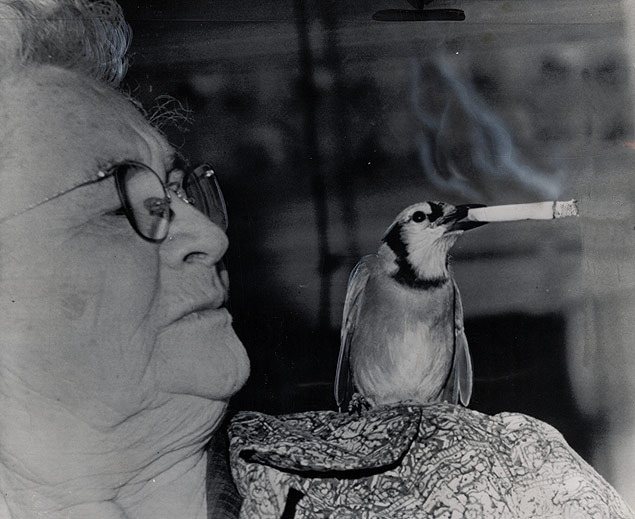

Greenwood Commonwealth (Mississippi) - Dec 8, 1962
image source: NY Journal American archive
Posted By: Alex - Sat Jan 20, 2024 -
Comments (0)
Category: Smoking and Tobacco
Koko the smoking poodle
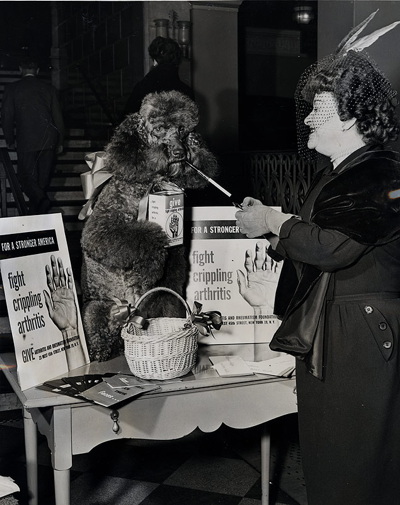
"Taking a break from soliciting support for the Arthritis and Rheumatism Foundation, 'Koko' the poodle pauses for a cigarette."
New York Journal American - Jan 18, 1952
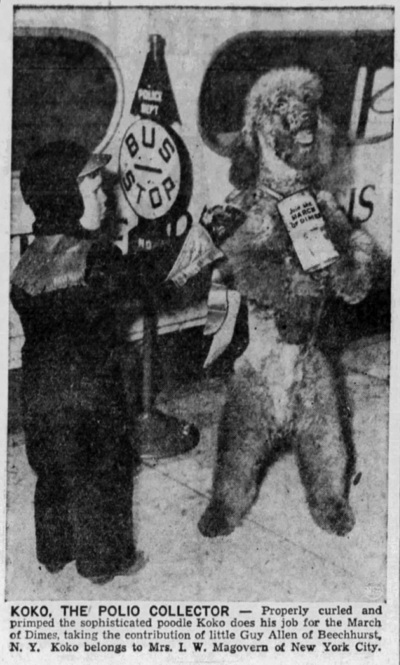
Rapid City Journal - Feb 18, 1950

New York Daily News - Nov 8, 1953
Posted By: Alex - Mon Jan 15, 2024 -
Comments (0)
Category: Smoking and Tobacco, Dogs, 1950s

| Who We Are |
|---|
| Alex Boese Alex is the creator and curator of the Museum of Hoaxes. He's also the author of various weird, non-fiction, science-themed books such as Elephants on Acid and Psychedelic Apes. Paul Di Filippo Paul has been paid to put weird ideas into fictional form for over thirty years, in his career as a noted science fiction writer. He has recently begun blogging on many curious topics with three fellow writers at The Inferior 4+1. Contact Us |




